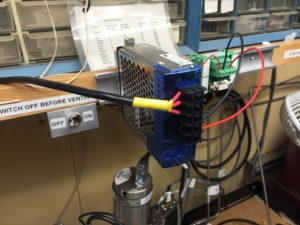When working on or around electrical equipment, it is important to be able to recognize electrical hazards. There are two parts: first it must be exposed, and second, it must be above a hazard threshold. Exposed, simply speaking, is when a person can inadvertently make contact with an energized conductor or circuit part. In it’s definition, a part is considered exposed if it is not properly guarded, isolated, or insulated. So if you can touch a bare part, then it’s considered exposed. Some common exposures to look for include:
 |
 |
| Open Panels | Broken receptacles |
 |
 |
| Unguarded parts | Open equipment |
High Voltages
For higher voltages (above 1000 V) there is an additional risk. The voltage is high enough to arc across an air gap, and you don’t have to make contact for it to be a hazard. In this case there are safe approach distances. Proper enclosures that surround the conductors and keep people far enough away are sufficient to guard against the hazard.
 |
| Cage surrounding an experiment with exposed high voltage parts |
How can you tell if it’s Exposed?
Determining whether a hazardous part is actually exposed is usually obvious, but not always. For times when a closer look is required, we use an articulated test finger. If the test finger makes it past a guard or through an enclosure opening and touches a circuit part, then the part is considered exposed. In these cases, we often re-engineer the guard or enclosure to properly eliminate the hazard exposure.
 |
 |
| UL Articulated Test Finger | Insufficient guarding around hazardous part |